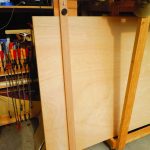We may receive a commission when you use our affiliate links. However, this does not impact our recommendations.
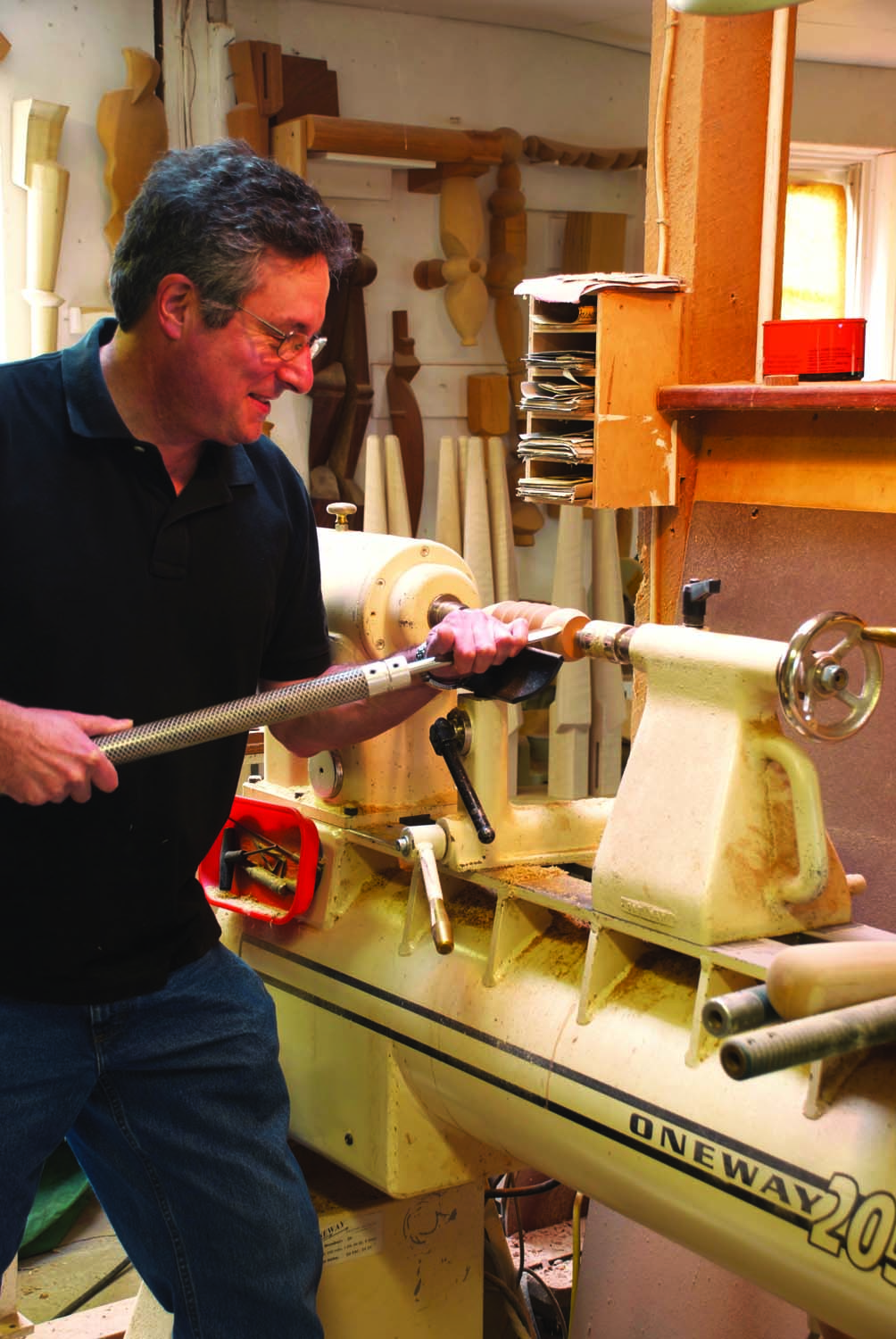
Editors note: Always wear proper safety gear when using any woodworking tool.
Mark Sfirri isn’t just a wood turner—he’s a turning teacher, turning researcher, turning author, turning lecturer and turning exhibit curator and judge. What’s odd about this well-rounded turner is that he doesn’t turn in the round. Multi-axis turning is his specialty—and few do it better.
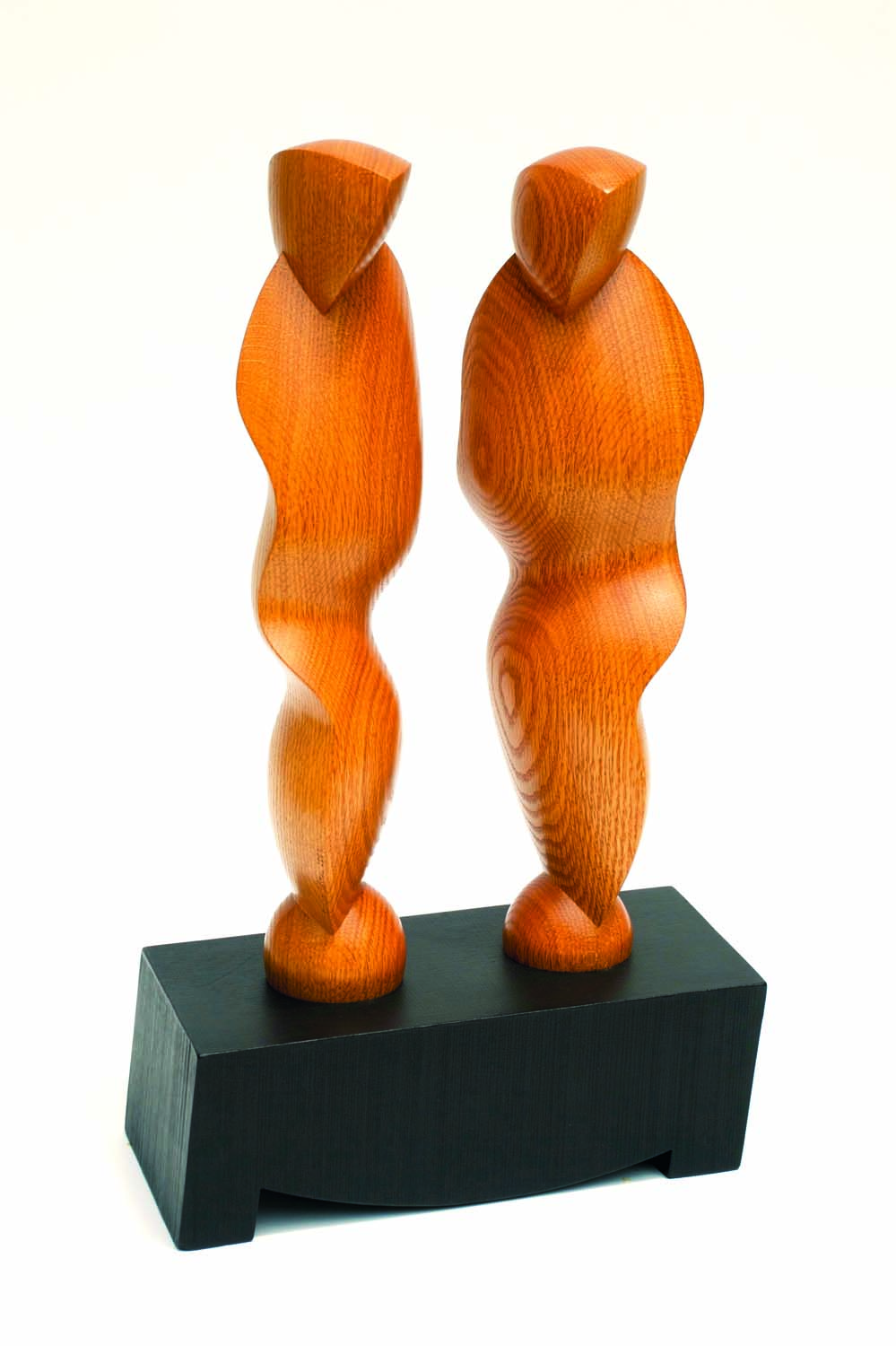
Oak Silhouettes
A Circular Path
Mark, who is 60 years old, became enamored by art at an early age. “I doodled WAY more than the average kid,” he explains. He had the good fortune of attending a high school with a special arts program run by a rigorous teacher, where he learned about shape, color and the basics of art and design. After graduating, Mark was accepted at the Rhode Island School of Design.
“My parents were okay with me going there as long as I majored in architecture so I could get a job,” Mark recalls. But the program was conceptual, not hands-on, which was what he wanted. “So I wandered through the different art studios at the school. The glass, printmaking and jewelry programs didn’t excite me, but loved the wood, tools and machinery in the wood shop.” He also discovered a teacher named Tage Frid, who taught him, among other things, the importance of planning and drawing out his ideas so he could communicate them.”
When Mark graduated, Frid asked him to run the school’s woodshop. (Mark also worked in Frid’s Rhode Island shop.) In 1978, after receiving his master’s degree from RISD, Mark moved to Rochester, New York, to work for an office furniture manufacturer. When he left three years later, he had become director of design and engineering.
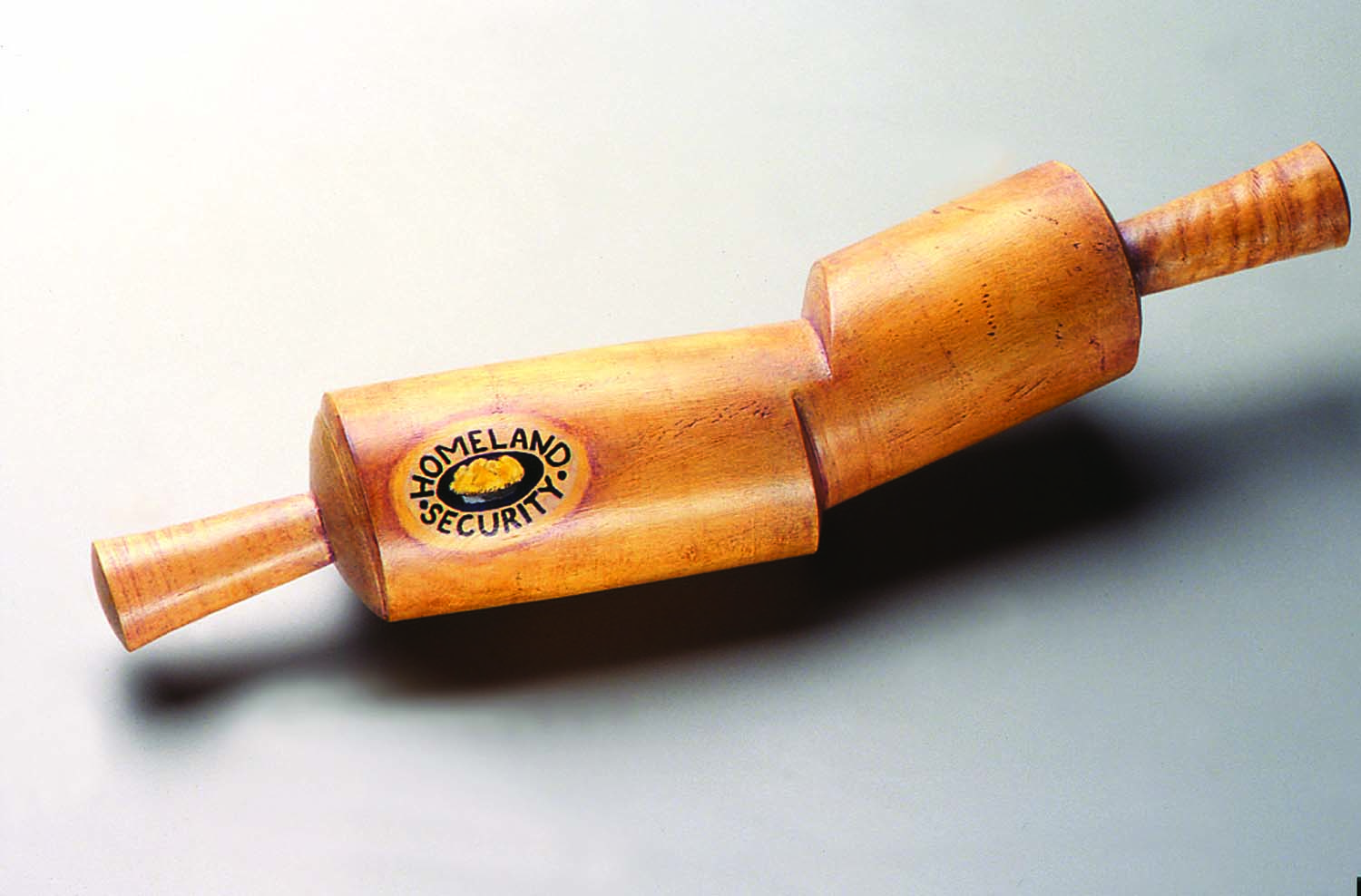
Homeland Security
A position opened up at the fine woodworking program at Bucks County Community College. Mark was hired because he possessed one qualification no one else had—industry experience. While teaching, he continued developing his own woodworking and furniture business. “In the ’80s, it seemed like anything went—kind of like the Wild West. There were lots of collectors and opportunities, and price wasn’t a huge factor.”
The financial landscape changed in the ’90s when recession hit, so Mark began to build very conservative furniture—a style he labeled “Recessionary Expressionism.” “I couldn’t sell any of it,” he explains, “so I decided I might as well make stuff that was appealing to me.” And what was appealing to Mark was multi-axis turning.
Where Math Meets Art
Mark has an affinity for math and art, and multi-axis turning allows him to combine these two loves. He also savors the engineering, the challenge posed by the difficult turning work and what he calls the “dash of illusion” that’s involved.
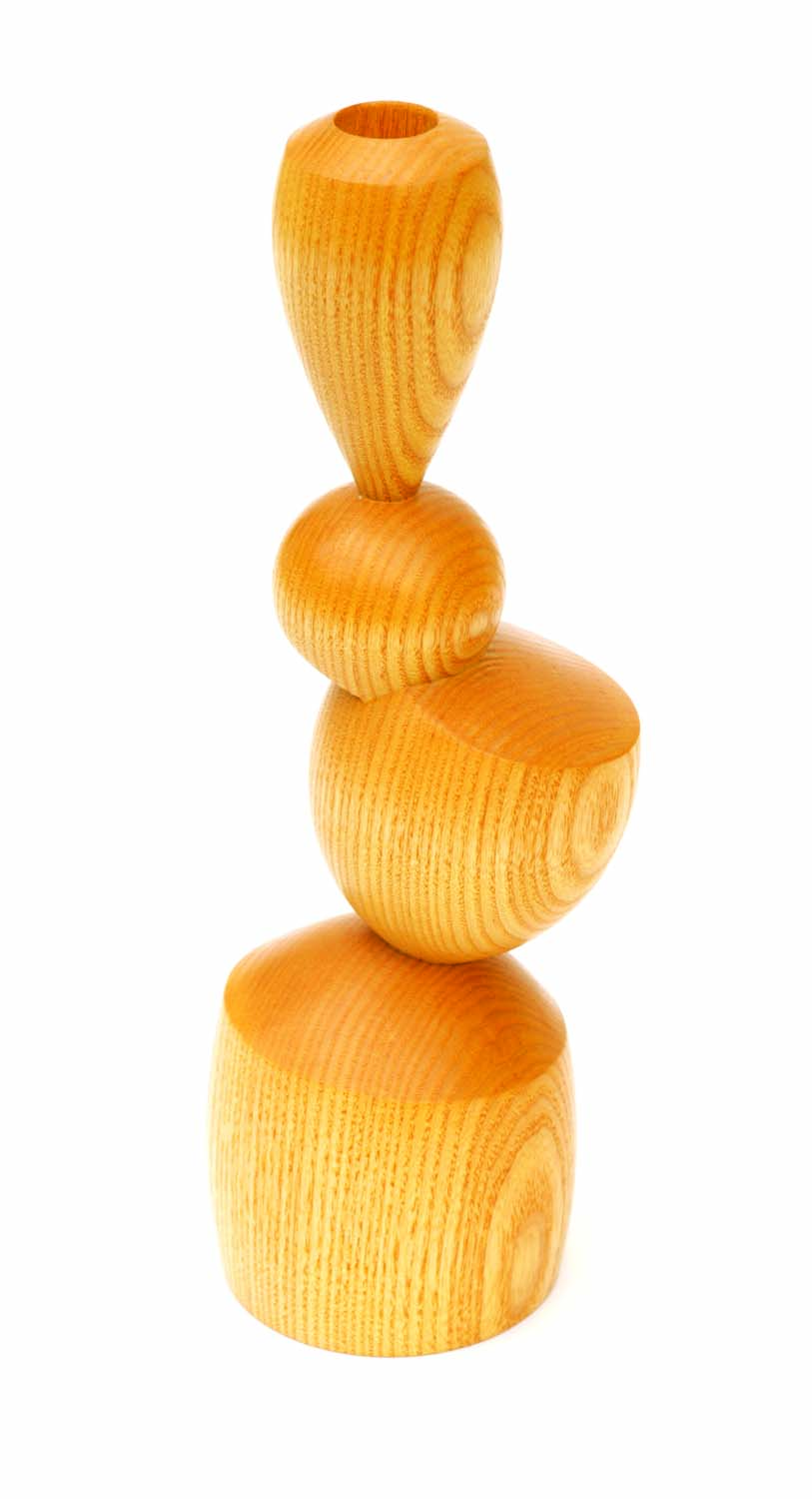
Tippy Candlestick
With conventional turning—where one centers an “X” on each end of the blank and uses these marks for positioning the lathe’s live and dead spindle centers—the turned piece has no option but to be round. Multi-axis turning involves mounting a blank in an offset position, turning all or part of it, then repositioning the blank and turning some more. Depending on the setup, the finished piece may be football-shaped in cross-section, symmetrical or seemingly free form. While multi-axis turning can appear to be free flowing and sculptural, careful calculations and planning are essential to achieve specific results.
The setup might involve marking 1″ away from the center on one end, making a second mark on the other end that can be in the same plane as the first or not, and turning based on these offset centers. Other variations, such as repositioning the blank on a second set of offset centers after turning a portion of it on the initial offset centers, result in more complex shapes.
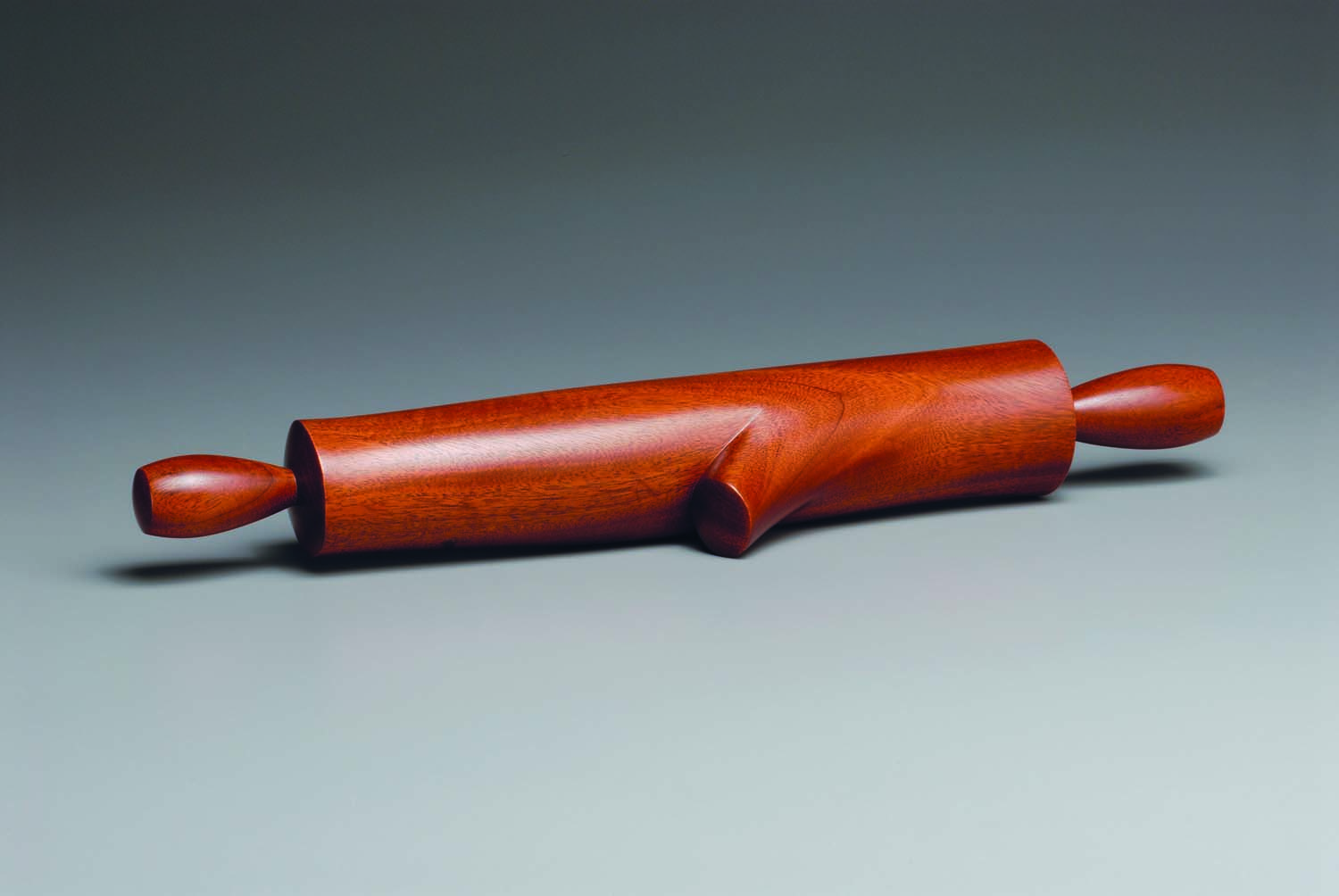
Branch Rolling Pin
For simple offset turnings Mark creates a game plan by drawing the cylindrical shape on kraft paper and cutting it out. Then he cuts the cut-out shape into multiple pieces and arranges them at the desired angles. From this pattern, Mark can determine the center points—and off-center points—that are needed to create the actual object.
For more complex pieces he often turns “three-dimensional sketches” on the lathe to work out the details. Mark sometimes builds half the project and leans it against a mirror. Then he steps back and squints to envision what the completed piece might look like. His studio has a wall full of samples. Some are “happy accidents,” but most are the result of careful planning. He also keeps detailed sketchbooks and notes that allow him to recreate the piece—or at least the technique—later on.
Since multi-axis and offset turning involves mounting wood on the lathe in unbalanced positions, Mark prepares and works with caution. When he first started turning, a workpiece “got away,” took a divot out of the floor and then flew 20′ across the room to shatter a cabinet. “If that cabinet had been a person, the piece would have killed him,” Mark observes. As a result, he places a premium on safety. He checks the blank and tool rest four or five times before starting the lathe and carefully adjusts the speed based on the blank’s size, shape and state of balance. Using cup centers is a must, he says. “Spur centers are dangerous, because they grip the wood. If a tool catches, either the tool or the workpiece has to give. Cup centers are much safer, because they have round, continuous rims that hold the wood, so if a tool catches, the center keeps spinning, but the workpiece simply stops.”
Mark’s advice to anyone who wants to try multi-axis turning is to start small and simple. “Experiment,” he says, “and plan to learn on something you can throw away!”
Inspired Designs
While some of Mark’s pieces are meticulously planned, others are simply inspired. After turning a baseball bat for his son, for example, Mark began thinking about its elegant form and perfect engineering; about how every part—from the knob on the end through the slender handle to the meat of the barrel—was built for pure function. “I began thinking about what a perfect blank canvas this would be for multi-axis turning,” he says. Rejects From the Bat Factory has become one of Mark’s signature works. His rejected bats are tied in knots, double handled, curved, cut in half and comically indented.
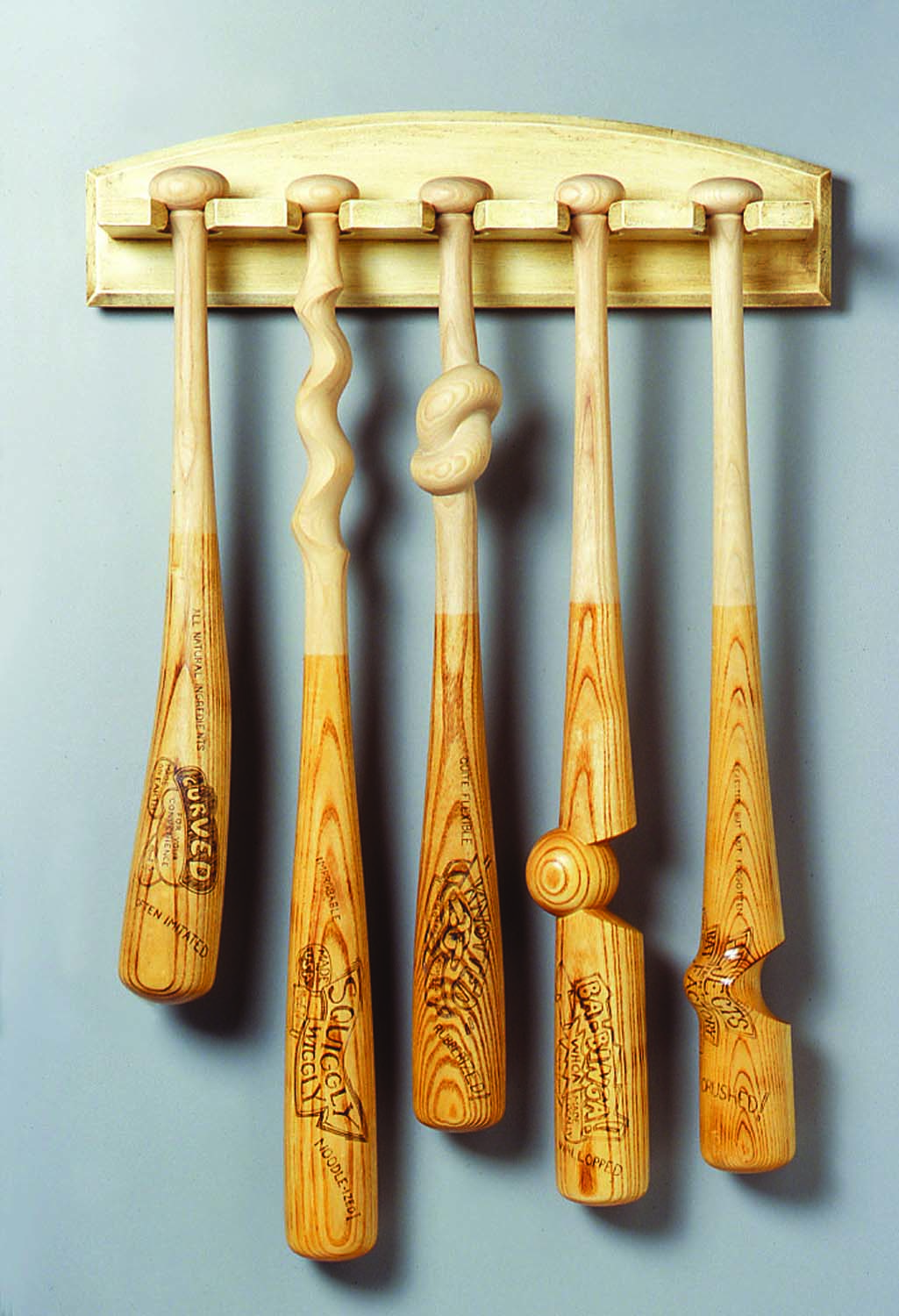
Rejects from the Bat Factory
Mark’s brightly painted, cartoon-like food cans and containers combine the best of Andy Warhol and Popeye. His inspiration for them came during a teaching jaunt to France, where he became intrigued with container shapes and how to animate them while trying to decipher the labels. You gotta love a guy who creates a can of Fromage Wzi.
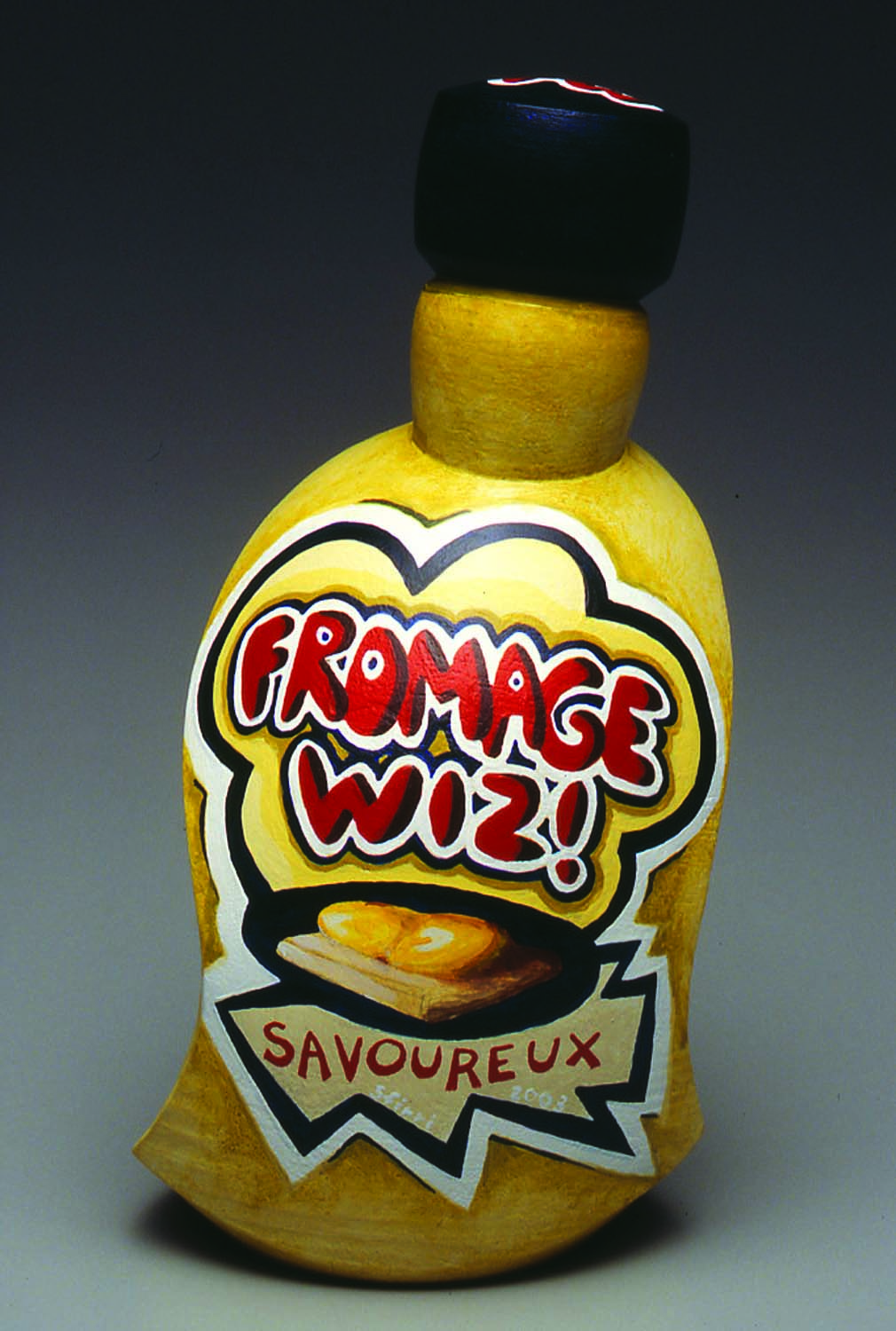
Fromage Wiz II
Humor is a serious part of Mark’s work. “But, it’s not like I’m laughing the whole time I’m making things,” he says. “Creating the illusion is a very measured process.” Still, there’s no denying that Mark loves to push the limits with wood. “In glass blowing and ceramics you’re working with droopy, fluid material and your goal is to make the final piece symmetrical. But in woodturning, once your piece is on the lathe, symmetry is a given. So lots of my work is aimed toward making wood look more elastic than it actually is.”
“For a few years I was worried that I’d run out of ideas. But I realized that if you leave yourself open to creativity—and nurture it—the ideas just keep coming,” Mark explains. He draws inspiration from pop culture and artists ranging from Picasso to Wanda Gag to Alphonse Mattia. He’s a devoted fan and authority on Wharton Esherick. “Esherick is the grandfather of the studio arts movement, one of the first people to think about personal expression through furniture,” he explains. “Even today, people who have never even seen Esherick’s work are influenced by artists that were influenced by him.”
Survival and Road Kill
As both a turner and a woodworker, Mark is somewhat of an anomaly. “Someone recently mentioned it was unusual to have feet in both camps. But the truth is when I’m with furniture makers they say, ‘Oh, you’re a turner—you’re one of those guys,’ and when I’m with turners they say ‘Oh, you’re a furniture maker’—like I’m not part of either club.” But Mark’s versatility has served him well. His tables, chairs and casework combine creative elements from turning and furniture making, and include both careful planning and spontaneity.
When choosing wood, Mark keeps the end product firmly in mind. Most turners like to showcase beautifully burled or curly-grained pieces of wood. (Mark jokingly refers to such woods as “road kill.”) But since many of Mark’s works are sculptural, he prefers woods with less drama and more straight grain, such as ash and mahogany. “I don’t want to get into the battle of wood grain vs. design,” he explains. For painted pieces, he prefers smooth, tight-grained woods. But he’s not opposed to showcasing a gorgeous hunk of tiger maple, cherry or walnut when the project calls for it.
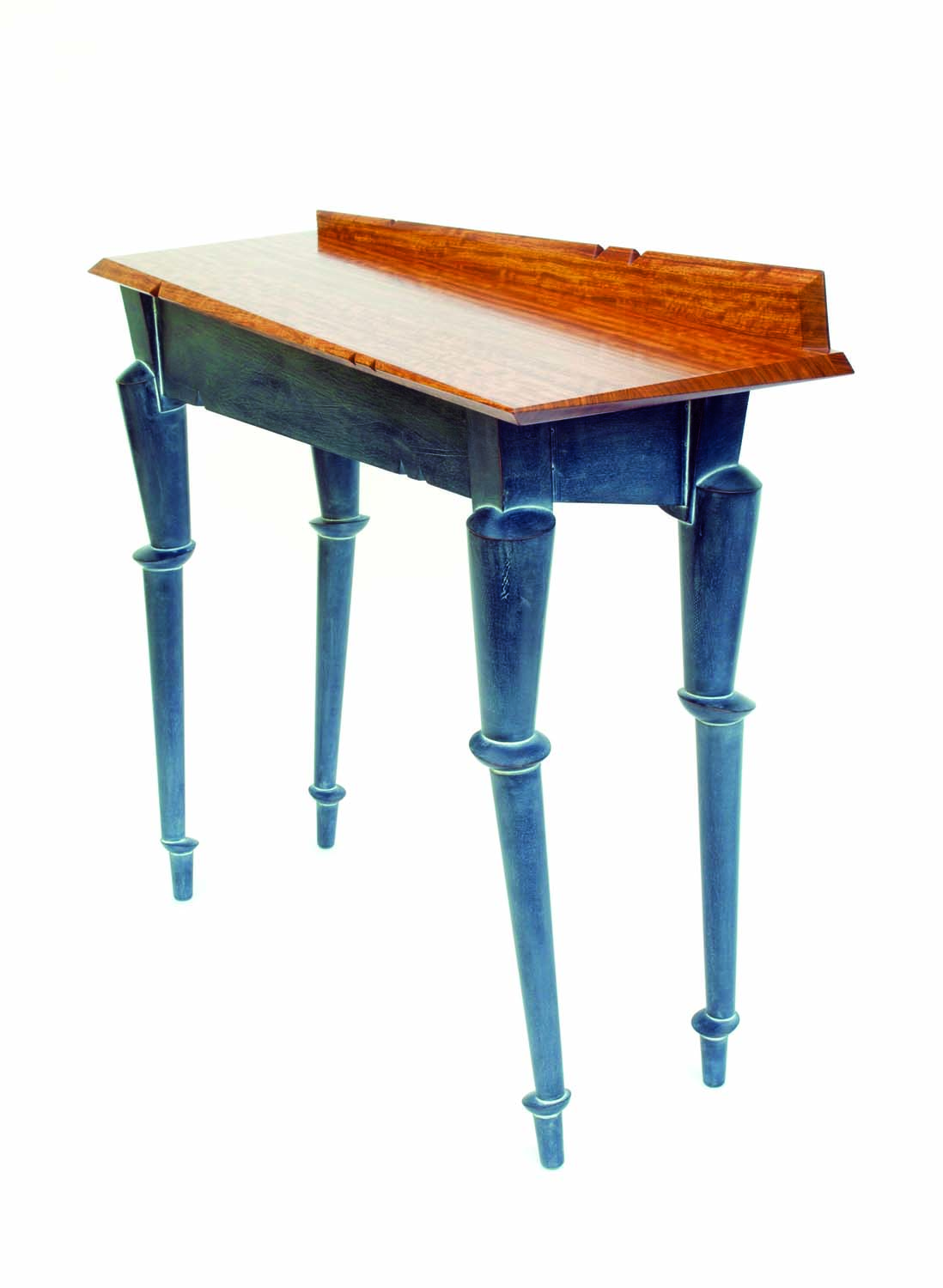
Hall Table
Mark credits the financial stability of his teaching gig at Bucks Community College (31 years and counting) for allowing him to stay with wood turning for the long haul. He loves every aspect of the craft. “Doing peripheral things such as research, curating and judging gives me a more well rounded view of the art world,” he explains. On the day of our interview, Mark is heading to Philadelphia for the grand opening of an exhibit at The Center for Art in Wood called “YOUR PERSONAL HANG-UPS.” It contains work by a wide variety of woodworkers—some of whom take the title literally, others very (very) conceptually. Like its creator, Mark’s entry, a coat rack titled Lunar Pad Foot, shows touches of inspiration from each viewpoint, just like its creator.
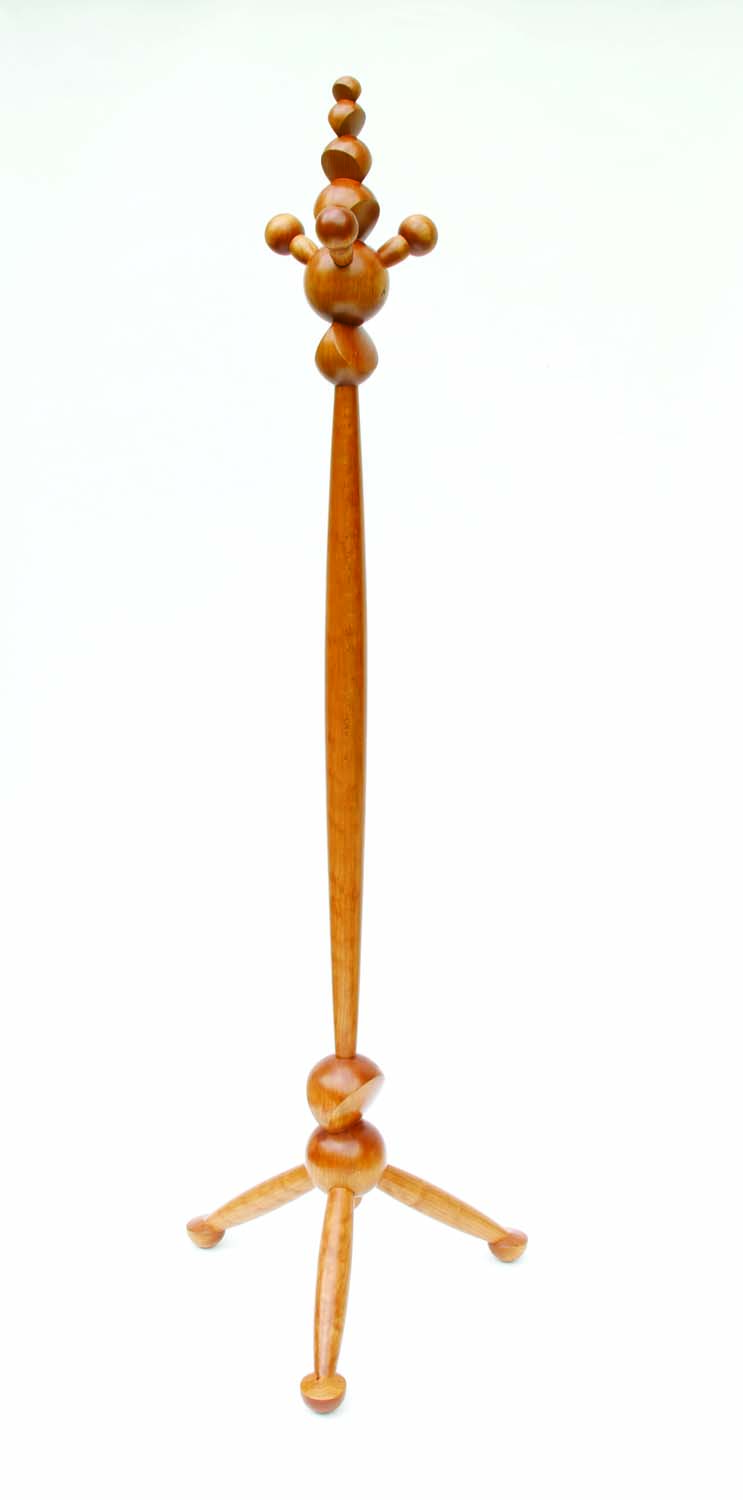
Lunar Pad Foot
Spike Carlsen is the author of Woodworking FAQ, A Splintered History of Wood and Ridiculously Simple Furniture Projects. For more information visit www.spikecarlsen.com or follow him at www.facebook.com/spikecarlsenbooks
Here are some supplies and tools we find essential in our everyday work around the shop. We may receive a commission from sales referred by our links; however, we have carefully selected these products for their usefulness and quality.









